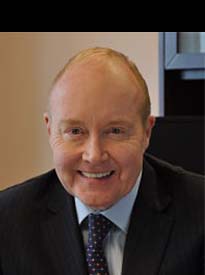The controversy surrounding Bridging Finance Inc. provides several interesting observations.
First, in recent years, small investors have become increasingly interested in alternative assets to improve their portfolio returns. Securities dealers, notably exempt market dealer (EMD) registrants, have responded to this demand by setting up an investment counsel/portfolio manager (IC/PM) registrant or by establishing business relationships with independent registered entities to package alternative investments into diversified funds for retail and institutional investors.
Bridging Finance Inc. specialized in private debt, but many registrants have expanded offerings to include a wide range of private market asset classes spanning private equity, real estate, infrastructure and ESG and impact investments.
The second observation is that the process to source and package assets and distribute them to investors is complex. For example, the EMD dealer (or a registered IIROC dealer) originates the alternative investments through a third-party registrant, usually another dealer. This origination adds significant complexity to the dealer, requiring specific business focus and operational capabilities, a well-defined and rigorous risk management framework, and specialized staff with the right mix of expertise, skillsets and judgment.
An IC/PM affiliate of the EMD or a related third party manages the alternative investments grouped in diversified funds segmented in particular risk categories or classifications. The EMD then distributes the diversified managed investments to retail and institutional clients, or to another dealer platform to access a wider range of investors.
The third observation is the considerable challenge for the registrant to meet the extensive existing regulatory obligations, particularly given the business focus on higher-risk assets and the need for an effective internal structure of staff supervision and reporting across the operations of the inter-connected business model.
The EMD and IC/PM integrated business model is a stark difference from the conventional EMD model that originates private placements and distributes directly to accredited investors. It is clear that the complexity of the business structure, the higher-risk investments and the extensive regulatory obligations will require the provincial securities commissions to adapt a more extensive and thoroughgoing compliance oversight process for these integrated EMD and IC/PM business models.
Compliance oversight should place particular focus on the “accredited investor” designation, the management of the conflicts of interest in the origination and distribution of proprietary investment funds, the assessment of portfolio risk to meet suitability requirements, transparent governance structures and operational practices, and efforts to avoid self-dealing by firm staff.
Moreover, the revamped oversight process could include more frequent compliance examinations and detailed reporting requirements. It could be argued that these registrants should be included in the self-regulatory model given the well-established compliance and reporting regimes of self-regulatory organizations. The likely evolution of these small EMDs into more complex structures makes an even stronger case for self-regulation.
